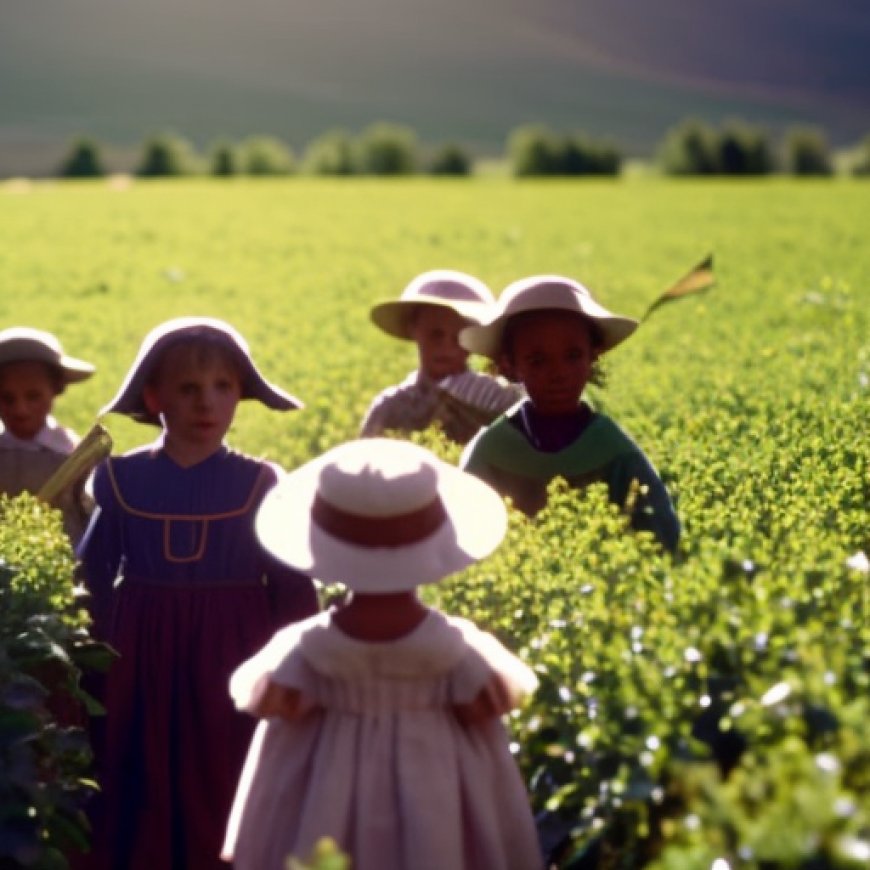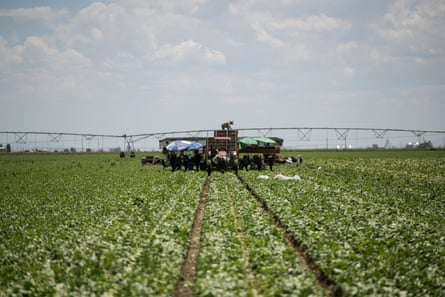‘It’s slavery for modern times’: how children of 12 toil in Colorado’s fields
‘It’s slavery for modern times’: how children of 12 toil in Colorado’s fields The Guardian


Child Labor in Colorado’s San Luis Valley Farms
High in Colorado’s fertile San Luis valley, the collision between Americans’ demand for cheap food and the reliance on cheap labour – including children as young as 12 – comes into stark relief. At nearly 2,500 metres (8,000ft) above sea level, the alluvial plain, known for vegetable production, lies far from the turmoil of Washington DC, where child labour laws have long been a flashpoint.
Agricultural Labor and Sustainable Development Goals
Farmers have grown vegetables here for generations, including for the US potato market, which supports, from cultivation to consumer, about 714,000 jobs and $34bn (£27bn) in wages. As well as potatoes, there are carrots and lettuce – produce that requires a high degree of manual labour.
- SDG 1: No Poverty
- SDG 4: Quality Education
- SDG 5: Gender Equality
- SDG 8: Decent Work and Economic Growth
- SDG 10: Reduced Inequalities
- SDG 12: Responsible Consumption and Production
- SDG 16: Peace, Justice, and Strong Institutions
The Reality of Child Labor in Agriculture
At rates of about $16 an hour, that labour may be from local people and continue down through generations. More likely, they are people coming from Mexico, Central America or South America on temporary work visas or as undocumented migrants. During the October harvest, they may be from the Navajo Native American reservation. The overwhelming majority (78%) of the agricultural workers identify as Hispanic/Latino.
- SDG 1: No Poverty
- SDG 4: Quality Education
- SDG 5: Gender Equality
- SDG 8: Decent Work and Economic Growth
- SDG 10: Reduced Inequalities
- SDG 16: Peace, Justice, and Strong Institutions
The Challenges and Dangers of Child Labor
The work, especially in the lettuce fields, is arduous, requiring lines of workers to move up and down the rows, hoeing and later picking lettuce heads, often from 5am to 3pm, when the heat on this high-altitude plain between the Sangre de Cristo and San Juan mountains begins to soar.

For Jacqueline Aguilar, whose father came from Mexico as a teenager and worked his whole life in the fields until his death last year, the work is, in a sense, traditional. From the age of 12, she worked alongside him.
Now 21, she recently returned from an internship in Washington with the Child Labor Coalition, one of several lobbying groups fighting efforts by 10 Republican-led states to roll back a century of protection laws restricting child labour.
- SDG 4: Quality Education
- SDG 5: Gender Equality
- SDG 8: Decent Work and Economic Growth
- SDG 10: Reduced Inequalities
- SDG 16: Peace, Justice, and Strong Institutions
The Need for Change and Advocacy
“I think Republicans are in denial that white people don’t want to work manual labour any more,” Aguilar says at the petrol station in Center, a farm town in the middle of the valley. “So they say, ‘let’s just send in the kids.’”
According to a 2018 Government Accountability Office report, more than half of work-related fatalities for children in the US happen in the agriculture sector, where one child employee dies roughly every three days. A separate study, from the National Children’s Center for Rural and Agricultural Health and Safety, found that 33 children are injured working on farms every day.
- SDG 1: No Poverty
- SDG 4: Quality Education
- SDG 5: Gender Equality
- SDG 8: Decent Work and Economic Growth
- SDG 10: Reduced Inequalities
- SDG 16: Peace, Justice, and Strong Institutions
The Path to Change and Future Outlook
Mhia Cazares was 16 when, picking lettuce in the Colorado fields last year, a truck rolled forward and back over her, injuring her spine. She was probably spared a fatal injury because the ground was soft after rain.

Her injury kept her off school, so she lost friends, and there were rounds of
SDGs, Targets, and Indicators
1. Which SDGs are addressed or connected to the issues highlighted in the article?
- SDG 8: Decent Work and Economic Growth
- SDG 10: Reduced Inequalities
- SDG 12: Responsible Consumption and Production
2. What specific targets under those SDGs can be identified based on the article’s content?
- SDG 8.7: Take immediate and effective measures to eradicate forced labor, end modern slavery and human trafficking, and secure the prohibition and elimination of the worst forms of child labor.
- SDG 10.7: Facilitate orderly, safe, regular, and responsible migration and mobility of people, including through the implementation of planned and well-managed migration policies.
- SDG 12.3: By 2030, halve per capita global food waste at the retail and consumer levels and reduce food losses along production and supply chains, including post-harvest losses.
3. Are there any indicators mentioned or implied in the article that can be used to measure progress towards the identified targets?
- Indicator for SDG 8.7: Proportion and number of children aged 5-17 years engaged in child labor, by sex and age group.
- Indicator for SDG 10.7: Number of countries that have implemented well-managed migration policies.
- Indicator for SDG 12.3: Food loss index (FLI) and food waste index (FWI).
4. Table: SDGs, Targets, and Indicators
| SDGs | Targets | Indicators |
|---|---|---|
| SDG 8: Decent Work and Economic Growth | Target 8.7: Take immediate and effective measures to eradicate forced labor, end modern slavery and human trafficking, and secure the prohibition and elimination of the worst forms of child labor. | Indicator: Proportion and number of children aged 5-17 years engaged in child labor, by sex and age group. |
| SDG 10: Reduced Inequalities | Target 10.7: Facilitate orderly, safe, regular, and responsible migration and mobility of people, including through the implementation of planned and well-managed migration policies. | Indicator: Number of countries that have implemented well-managed migration policies. |
| SDG 12: Responsible Consumption and Production | Target 12.3: By 2030, halve per capita global food waste at the retail and consumer levels and reduce food losses along production and supply chains, including post-harvest losses. | Indicator: Food loss index (FLI) and food waste index (FWI). |
Note: The indicators provided are examples and may not be the exact indicators used by official monitoring bodies.
Behold! This splendid article springs forth from the wellspring of knowledge, shaped by a wondrous proprietary AI technology that delved into a vast ocean of data, illuminating the path towards the Sustainable Development Goals. Remember that all rights are reserved by SDG Investors LLC, empowering us to champion progress together.
Source: theguardian.com

Join us, as fellow seekers of change, on a transformative journey at https://sdgtalks.ai/welcome, where you can become a member and actively contribute to shaping a brighter future.







